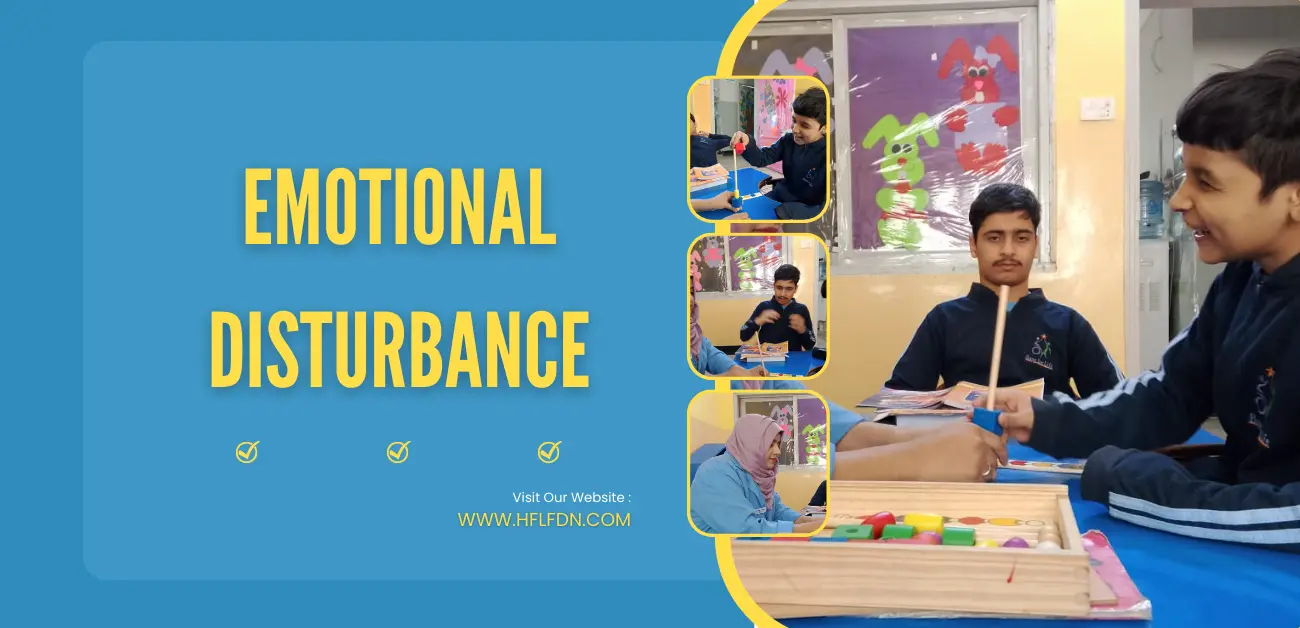An inability to build or maintain satisfactory interpersonal relationships with peers and Educators.
Emotional disturbance is a condition that, for a long period and to a large degree, affects a child’s ability to learn and succeed, both educationally and interpersonally. It includes External behavior symptoms, such as aggression and hyperactivity.
WHAT ARE THE 6 TYPES OF EMOTIONAL DISTURBANCES?
There are 6 types of emotional disturbances:
• Anxiety disorders,
• bipolar disorder,
• conduct disorders,
• eating disorders, obsessive-compulsive disorder (OCD),
• psychotic disorders.
WHAT CAUSES EMOTIONAL DISTURBANCE?
No one knows the actual cause or causes of emotional disturbance, although several factors—heredity, brain disorder, diet, stress, and family functioning—have been suggested and vigorously researched. A great deal of research goes on every day, but to date, researchers have not found that any of these factors are the direct cause of behavioral or emotional problems.
1. CHARACTERISTICS
A student with an emotional disturbance cannot learn in school which cannot be explained by other factors, as well as the inability to build or maintain good relationships at school. These students display difficulties with behavior or feelings and may be generally unhappy. They may develop physical symptoms or fears that affect home and school.
Some of the characteristics and behaviors seen in children who have an emotional disturbance include:
*Hyperactivity (short attention span, impulsiveness);
*Aggression or self-injurious behavior (acting out, fighting);
*Withdrawal (not interacting socially with others, excessive fear or anxiety);
*Immaturity (inappropriate crying, temper tantrums, poor coping skills); and
*Learning difficulties (academically performing below grade level).
Children with the most serious emotional disturbances may exhibit distorted thinking, excessive anxiety, bizarre motor acts, and abnormal mood swings.
Emotional disturbance is one of the categories of disability specified in IDEA.
LEARNING DIFFICULTIES
*Academically performing below grade level.
*May function two or more years below grade level in reading, math, writing, and spelling.
*Emotional disabilities may be related to learning difficulties. For example, if the student has severe anxiety, they may be unable to attend, listen, and learn while in school.
*May lack social skills that are necessary for school success.
*May display language problems in both expressing ideas and understanding what others are communicating.
*May not have strategies to be successful in school, such as memorization skills and attention, which may lead to academic difficulties.
*May struggle with organization and time management.
*Are at risk of dropping out of school, affecting their future.
*May have average, or even above-average academic achievement.
*May display an inability to sustain attention.
SOCIALIZATION AND BEHAVIOR
*Difficulty interacting socially with others due to excessive fear or anxiety
*May withdraw from others and appear isolated
*May exhibit symptoms of depression
*May avoid interactions with peers or adults
*May not interact appropriately with peers, teachers, siblings, and parents
*May have few or no friends
*May affiliate with deviant social groups
*May blame behavioral or social problems on teachers or other students
*May be aggressive with peers and adults and cause injury when playing or interacting with others
*May display covert aggression (e.g. lying, cheating, vandalizing)
*May display relational aggression (i.e. manipulating, gossiping, excluding someone)
*May display limited perspective-taking skills
*May act out in class, and may not appear to respond to discipline from teachers
*May seem not to care about class and school rules
*May be at higher risk for substance abuse
*May show signs of impulsivity (hyperactivity, defiance, opposition, risky behaviors).
Demonstrates immaturity (inappropriate crying, temper tantrums, poor coping skills)
2. WARNING SIGNS AND RISK FACTORS FOR EMOTIONAL DISTRESS
*Eating or sleeping too much or too little
Anger, feeling edgy, or lashing out at others
*Overwhelming sadness
*Pulling away from people and things
*Not connecting with others
*Lack of energy or always feeling tired
*Feeling like you have to keep busy
*Having unexplained aches and pains, such as constant stomachaches or headaches
*Feeling helpless or hopeless
Excessive smoking, drinking, or using drugs, including prescription medications
*Worrying a lot of the time; feeling guilty but not sure why
*Thinking of hurting or killing yourself or someone else
*Having difficulty readjusting to home or work life
Children and youth with emotional disturbances need our full attention and support. As educators, school professionals, and parents we need to be the light in these students’ lives. The high dropout and unemployment rates continue to increase and this vicious cycle.
Ms. Mahreen Azmat
Remedial/Behavior therapist

